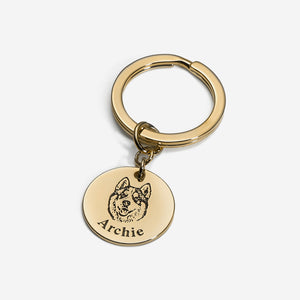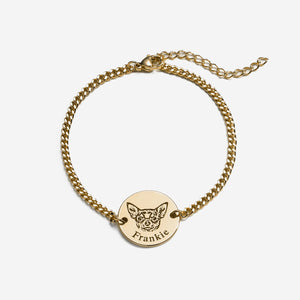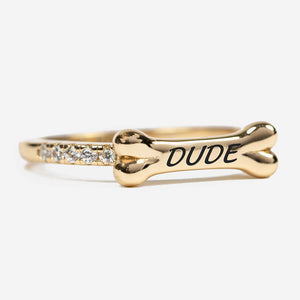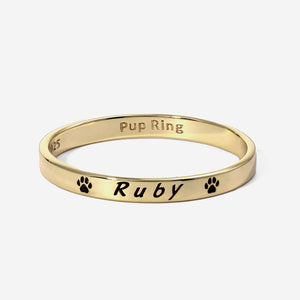Right now, we all have a pretty good sense of how important socialization is in our own lives. (I know you introverts are out there, but even most of us could use at least a little social interaction once in a while). Have you ever really thought about what socialization means to your dog?
First off- why socialize your dog?
Socialization is an incredibly integral part of your dog’s well-being and understanding of the world around it. There are really 2 central reasons your dog needs socialization:
It helps them learn their language. Dogs use their body language as, well, a language! This is how dogs communicate together and is vital to having a dog that is not only well-mannered with people, but who can clearly express themselves and their wants or needs to dogs, and understand things that other dogs are trying to tell them. Imagine if you met a stranger but you didn’t understand the difference between “I’m angry, stay away!” and “I’m in the mood to play!”. This could lead you (or your pup) into a bad situation. This is especially important in the early stages of a puppy’s life. Hopefully your dog had the opportunity to socialize with its siblings and mother during their early life- this will make it much easier for them later on in their life. But extra socialization is still important! (By the way, if you want to know more about reading doggy body language, you can check out our article on that here!)
 It helps them feel confident in new situations. Imagine this- you have never been outside besides in your backyard. You have never seen a car drive by on a street. You’ve never had to interact with a stranger, or get your hair cut, or really very many other things like that. Imagine now suddenly being thrust into these experiences and more. You would probably be somewhere in between very uncomfortable and outright terrified!
It helps them feel confident in new situations. Imagine this- you have never been outside besides in your backyard. You have never seen a car drive by on a street. You’ve never had to interact with a stranger, or get your hair cut, or really very many other things like that. Imagine now suddenly being thrust into these experiences and more. You would probably be somewhere in between very uncomfortable and outright terrified!
Socializing your dog means more than puppy playdates. It means being exposed to new situations, sensations, sounds, feelings, etc. It also means being comfortable around new people too. The more new experiences you can expose your dog to, the more confident they will be in handling any situation that comes their way (including ones you don’t expect either!). A few situations that your dog needs to be prepared for are meeting new people, being in new places with new sounds or sensations, going to and being handled by a vet, and more. You want your dog’s transition into a normal life to be as easy as possible!
How to socialize your dog during COVID-19
Depending where you live right now, it may be easier or more difficult to get in your pup’s socialization needs in the more traditional ways- aka utilizing dog parks, playing with strangers all the time, visiting relatives, or travelling somewhere new. While not having these options may make socialization seem impossible, there are some creative ways you can help fill your dog’s socialization needs.
1. Socializing with other dogs
Socializing your dog with others might be one of the trickiest parts of this process. There are not as many options right now that you would normally have- like doggy daycare, dog parks, or playdates.
Playdates- In a best case scenario, you could arrange for a friend or relative to drop their dog off at your home for a while. This is a really good option because it benefits both your dog and theirs! While finally being able to play together is great, try to make sure the dog visiting is compatible with your own dog. An old tired dog may be more easily annoyed by a hyper puppy. Make sure both dogs have a quiet space they can go to if they get overwhelmed, and try to give them a break at least once every hour- potty breaks are especially important during playtime since they may be having so much fun they forget they need to go before an accident happens! Enforcing breaks also gives them a chance to calm down and ensure that they feel comfortable.
Walks- This solution will come up more than once! If you are unable to arrange a playdate with another dog, going on a walk in an area where you are likely to see other dogs is a step in the right direction. It is easier and safer for you to do than crowding together with others to arrange group playdates. If you are still feeling very wary of being near others (being immunocompromised yourself, or living with others who are vulnerable), giving your dog the opportunity to see others, even from a distance, is better than nothing. You can praise your dog and even give a treat when they simply notice another out and about to help teach them that other dogs mean good things happen! If you want to know more about having the perfect walk with your dog, there’s a whole article with tips, tricks, and problem fixes here!
 Important leash-greeting tip- If your dog is going to be greeting others up close, be aware that a dog on a leash may be more uncomfortable than usual, or even behave differently or lash out. This is called leash reactivity. There are a few reasons for this, mainly that a leash may interfere with a dog’s ability to perform normal social interaction. Dogs on a leash can potentially be a little more frustrated with being restrained around other dogs. A tight leash can also trigger fear or aggression in some dogs. I had an odd experience firsthand when introducing my dog Cookie to a relative’s adopted dog. I had Cookie on his leash while the other dog was not, and it growled and snapped at Cookie. At first I thought it was just the dogs disliking each other, but when I took Cookie off the leash it was like they were best friends. This other dog came from a sad and abusive home and was not used to people being kind in general, let alone strangers, so it’s possible that by having Cookie leashed this other dog was super stressed. So TL;DR: Dogs on a leash can potentially misbehave or lash out just because they are leashed.
Important leash-greeting tip- If your dog is going to be greeting others up close, be aware that a dog on a leash may be more uncomfortable than usual, or even behave differently or lash out. This is called leash reactivity. There are a few reasons for this, mainly that a leash may interfere with a dog’s ability to perform normal social interaction. Dogs on a leash can potentially be a little more frustrated with being restrained around other dogs. A tight leash can also trigger fear or aggression in some dogs. I had an odd experience firsthand when introducing my dog Cookie to a relative’s adopted dog. I had Cookie on his leash while the other dog was not, and it growled and snapped at Cookie. At first I thought it was just the dogs disliking each other, but when I took Cookie off the leash it was like they were best friends. This other dog came from a sad and abusive home and was not used to people being kind in general, let alone strangers, so it’s possible that by having Cookie leashed this other dog was super stressed. So TL;DR: Dogs on a leash can potentially misbehave or lash out just because they are leashed.
2. Socializing with people
Teaching your dog to be comfortable around other people, especially strangers and children, is very important, and also very tricky right now. You also want your dog to be more comfortable being handled by a vet or even a groomer. I have a couple of workarounds that can help put your dog in the right direction for approaching these interactions:
Walks- Yes, again with the walks. Walks are really the easiest way to expose your dog to all kinds of new things, pandemic or not. You can use the see-and-treat method I talked about before with humans too. If someone new walks by, you can praise your dog and give them a treat. All of a sudden, the mere presence of a stranger is a good thing! By the way, your dog may be a little bit confused or uncomfortable with all the face coverings since they can also _read human body language through facial expressions_. We’ll talk about getting used to new situations and objects a bit more in the next section
Roommates- Whether family members or rent-splitting friends, you have an advantage here. Getting your other household members to help your dog experience new behaviors from people can help. Why? When your dog encounters new people, especially those who are not so used to pups, they may act differently around your dog. Toddlers are more likely to poke, prod, and play. While of course it’s important to educate the kids in your life about properly approaching a dog, desensitizing your dog can lessen the annoyance associated with these tiny wiggle-worms. Other folks may pet your dog in different ways, places they’re not used to, etc. Giving your dog new experiences through the people already in its life can help make the behaviors of strangers feel a little less alien in the future.
 Special interactions- Along with desensitizing your dog to new petting behaviors, there are specific ways to help your dog get used to being handled by pet professionals. While a normal doctor may poke and prod you in different ways than most humans, you’re capable of understanding it’s all part of ensuring your health. You can’t tell your dog that its teeth are being examined to make sure they’re healthy, you can help your dog be a little more accustomed to special interactions it may have with vets or even groomers. Practice things like looking at their teeth and in their ears and eyes. Regularly handle their paws, claws, and generally expose your dog to new sensations and handling you may associate with a vet or groomer. Even trying things like touching a brush to their fur or a pair of clippers to their claws can mean an easier transition back to regular handling by strangers for special purposes.
Special interactions- Along with desensitizing your dog to new petting behaviors, there are specific ways to help your dog get used to being handled by pet professionals. While a normal doctor may poke and prod you in different ways than most humans, you’re capable of understanding it’s all part of ensuring your health. You can’t tell your dog that its teeth are being examined to make sure they’re healthy, you can help your dog be a little more accustomed to special interactions it may have with vets or even groomers. Practice things like looking at their teeth and in their ears and eyes. Regularly handle their paws, claws, and generally expose your dog to new sensations and handling you may associate with a vet or groomer. Even trying things like touching a brush to their fur or a pair of clippers to their claws can mean an easier transition back to regular handling by strangers for special purposes.
3. New Experiences
Finally, exposing your dog to new experiences is the number one way to build their confidence in tackling the crazy world around them. Of course, one of the greatest tools at your hands is…
Walks- The third aspect of a walk is that your dog is experiencing a countless mount of new situations, sounds, sensations, and sights. Cars, animals, children playing, trash bins, weird sculptures that look like all-knowing giant frogs (we had a lot of those back when we lived in Erie. A weird sight indeed that may strike fear into the hearts of both small children and dogs alike, depending on the art style.) Take the opportunity to walk to new places with your dog and you may both find something new and interesting to see!
Another huge bonus for walks is that they are really good for you too! I know many of us may be neglecting ourselves and feeling stuck- getting some sunlight and fresh air is good, and a change of scenery can be so incredibly refreshing. Also that good ‘ole vitamin D is good for your immune system and chasing away the winter blues. Seriously if you can do it, go for it.
 New objects- You may think that there’s no getting around the boredom and monotony of being at home, but think again. There are more ways to get your dog thinking than shopping online out of boredom and buying fancy new toys for your dog, only to watch them sniff it for about five seconds and go back to the ratty stuffed moose they are already so in love with (maybe you should wash that thing, you know it’s been a while, but seriously it’s full of slobber and weird smells). Everyday objects that your dog isn’t used to can provide a different experience. For example, you can try opening an umbrella and leaving it on the floor to investigate. It sounds silly, but at this point even I would be distracted by such a thing rolling around on my living room floor and watching my cat try to bat at it or climb inside. Try out these tips for endlessly entertaining your dog with a cardboard box. Rotate your dog’s toys rather than leaving them all out at once. Play new styles of music or weird sounds on the radio. Anything you can do to change things up in a weird way, try it!
New objects- You may think that there’s no getting around the boredom and monotony of being at home, but think again. There are more ways to get your dog thinking than shopping online out of boredom and buying fancy new toys for your dog, only to watch them sniff it for about five seconds and go back to the ratty stuffed moose they are already so in love with (maybe you should wash that thing, you know it’s been a while, but seriously it’s full of slobber and weird smells). Everyday objects that your dog isn’t used to can provide a different experience. For example, you can try opening an umbrella and leaving it on the floor to investigate. It sounds silly, but at this point even I would be distracted by such a thing rolling around on my living room floor and watching my cat try to bat at it or climb inside. Try out these tips for endlessly entertaining your dog with a cardboard box. Rotate your dog’s toys rather than leaving them all out at once. Play new styles of music or weird sounds on the radio. Anything you can do to change things up in a weird way, try it!
You should also help your dog get used to the idea of face coverings. It can be confusing for them because they learn to read human facial expressions, and they've been suddenly thrust into a world where these weird objects are all over. Get them used to seeing masks by themselves, and work your way up to getting them accustomed to seeing others with their faces covered.
Other considerations
One other important consideration is that someday your dog will need to learn to be home alone again. While all this extra time for loving, petting, and playing with your dog has been fantastic, taking the time to separate from your dog a few hours every day will make the transition back to a normal work and errand-running schedule is essential. I know I feel really guilty when I have to leave Cookie at home already, but setting him up for success in a post-pandemic world is an integral part of his health and well-being. We all love and care about our dogs, and we want the best for them in the long run!
What do you think? Do you have other ways to make your dog think? How have you tried to entertain your dog (and yourself) lately? Let us know! Thanks again for reading, and I look forward to writing for you again next week!







